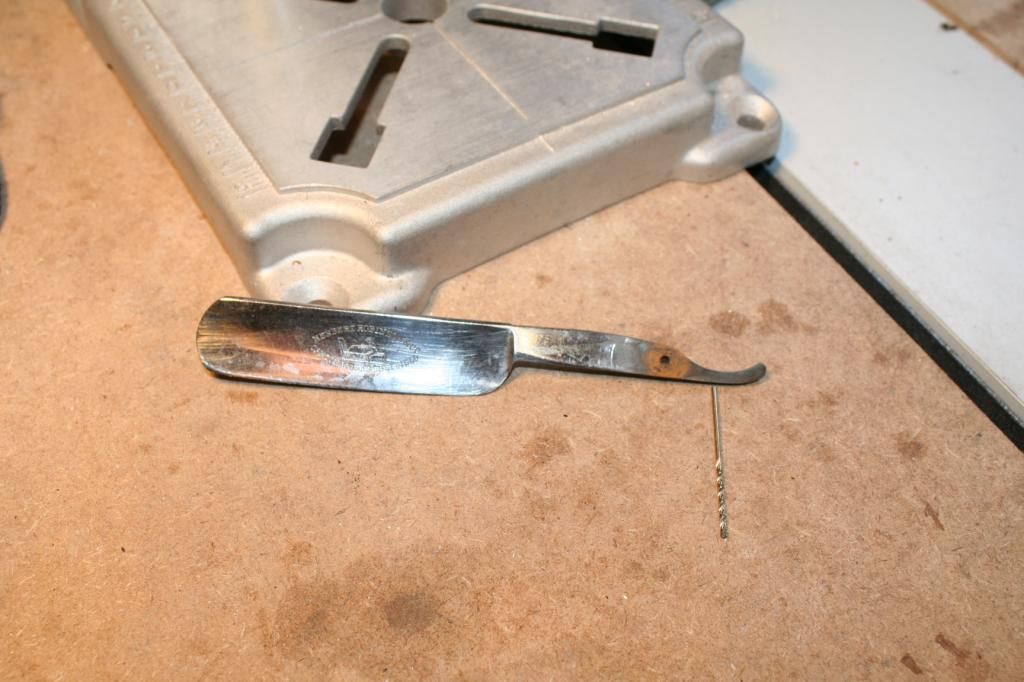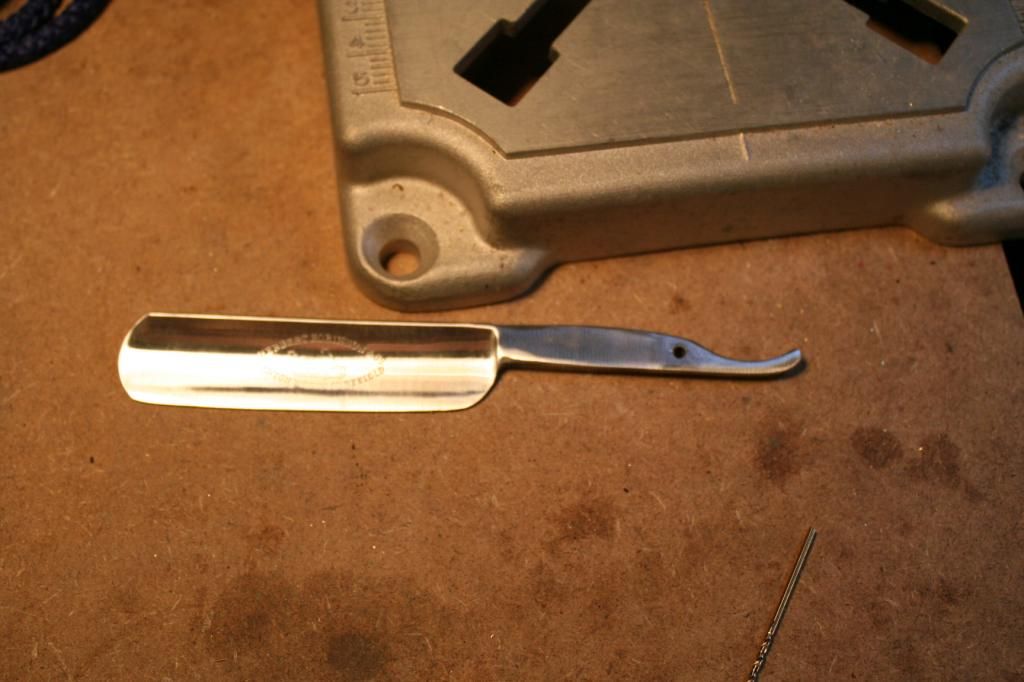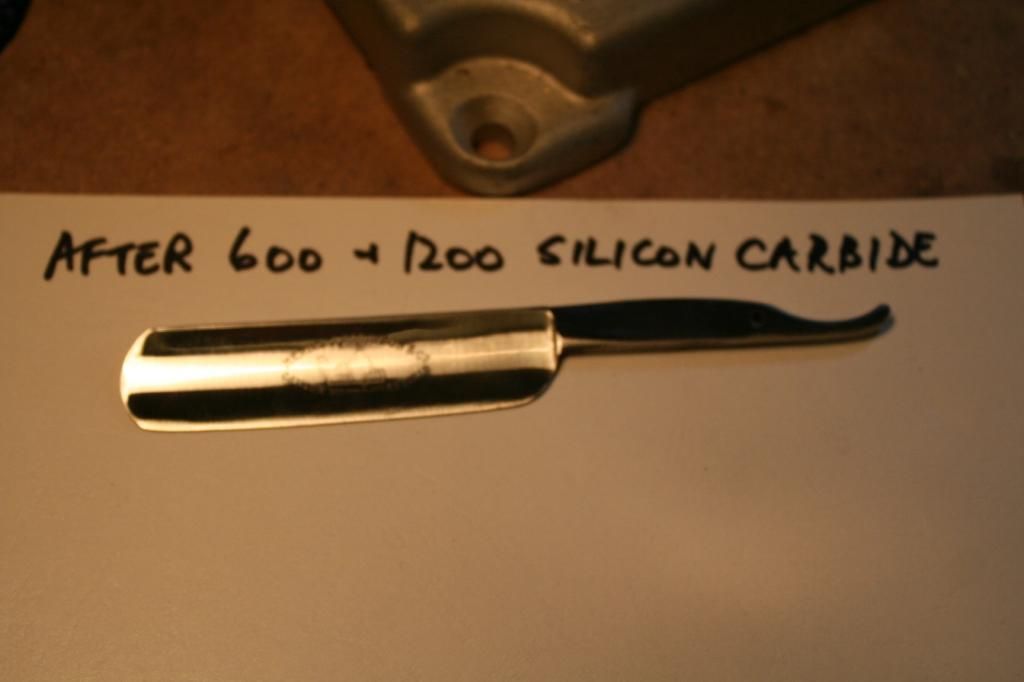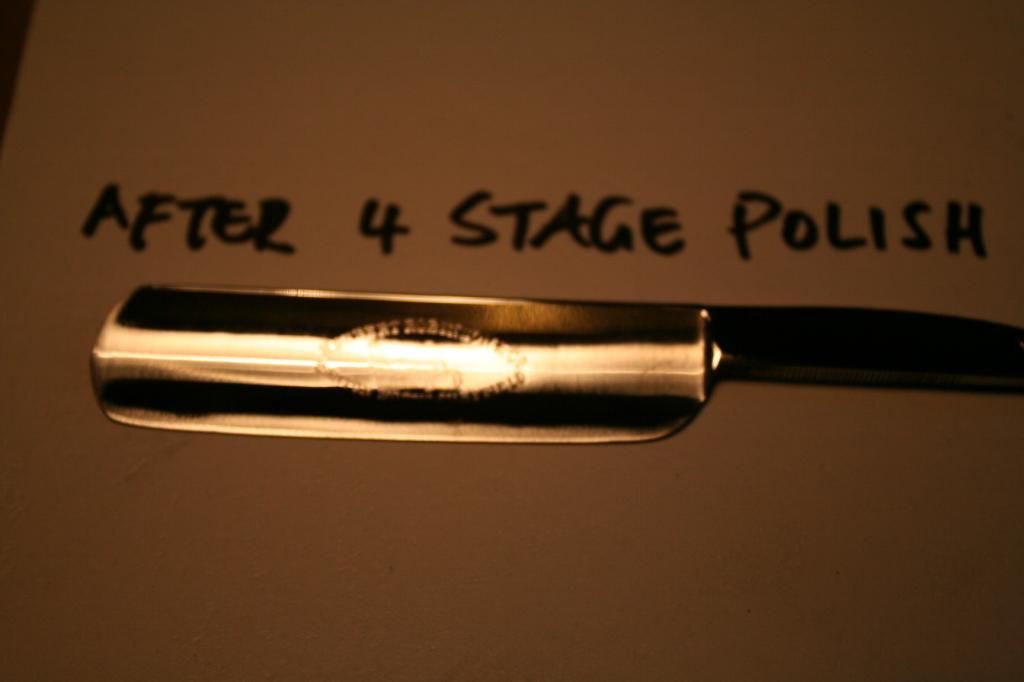Results 1 to 10 of 13
-
01-25-2015, 03:00 PM #1
 Alum Oxide powder - an alternative to greaseless
Alum Oxide powder - an alternative to greaseless
I have become increasingly disenchanted with loading greaseless compounds and their staying power - having read about various techniques for reducing the 'fly-off' I have never managed to load my mops without creating a mess on myself and the workroom wall.
However, looking at my mop suppliers website I came across a 'mop cement' and loose aluminium oxide powder - the loading is really simple, you paint on the water based cement and then roll it in the powder and allow to dry. It creates a uniform surface - I sprinkled the powder onto foil and then poured the residue back into its container.
Experimenting with 180 and 320 grit, I would say it is slightly more aggressive than the comparable grits in compound so you need a light touch. I used 3" close stiched mops on a small variable speed polisher at lowest speed - with no noticeable heat build-up.
It's well worth a trial - my supplier in the UK sells small volumes - the only drawback is that 320 is the highest grit he stocks whereas something like 600 and 1000 would make a really good base prior to using polishing compounds.My service is good, fast and cheap. Select any two and discount the third.
-
The Following User Says Thank You to UKRob For This Useful Post:
Euclid440 (01-25-2015)
-
01-25-2015, 04:39 PM #2Senior Member



- Join Date
- Apr 2012
- Location
- Diamond Bar, CA
- Posts
- 6,553
Thanked: 3215
Yea, recently met a guy who told me he used the same method and swears by it.
You can buy grits down to 60 or 80 from Gotgrit.com.
Castwell’s sells the glue and grit as well as an “Abrasive Wheel System”, I have often wondered about it, may have to try it.
I use 2 wheels of the same grit so one is drying as the other is in use and try to do all the buffing at one time.
I do keep a 600 grit on another buffer that is great for touch ups and the grit I use most often.
-
01-25-2015, 05:56 PM #3At this point in time...




- Join Date
- Jun 2007
- Location
- North Idaho Redoubt
- Posts
- 27,063
- Blog Entries
- 1
Thanked: 13249
How does the "Re-load" work when needed ????
Do you just add more glue and reload, or do you have to clean the wheel first with a Rake ???
-
01-25-2015, 05:59 PM #4

According to the information on the supplier website you apply cement on top and build up from there - the wheels become better with a couple of applications.
Having used them on just two blades, it looks as though one application will last much longer than greaseless.Last edited by UKRob; 01-25-2015 at 06:02 PM.
My service is good, fast and cheap. Select any two and discount the third.
-
01-25-2015, 06:08 PM #5At this point in time...




- Join Date
- Jun 2007
- Location
- North Idaho Redoubt
- Posts
- 27,063
- Blog Entries
- 1
Thanked: 13249
I would love for you to continue this thread Rob, as you gather more info please share with the rest of us, so much of the info out there is just not geared to us as SR guys and the more we get from us, for us, the better off we are
Pics etc: would be most welcome..
Color me interested
-
01-25-2015, 06:22 PM #6

Will do Glen - I'll post a few pictures of one I finished polishing but it will give some idea.
Incidentally, I checked the Caswell US site and that has the grit up to 320 only. Having searched the net I can see that brown alum oxide is available at 600, 800 and 1000 grits from other websites in the US so if any one tries the higher ratings please add to the thread.My service is good, fast and cheap. Select any two and discount the third.
-
01-25-2015, 07:15 PM #7Senior Member



- Join Date
- Apr 2012
- Location
- Diamond Bar, CA
- Posts
- 6,553
Thanked: 3215
The guy I spoke with said he was using 2 in. felt wheels ganged together to make a long bob, to get in the belly of a hollow ground blade.
I saw the kit on Castwells web site, and I think a bottle of glue and some 80 grit was about 10 dollars.
I have some ½ x 2in felt wheels from Harbor Freight and lots of grit from lapping stones, so really all I need is the glue.
I had planned to order some with my next Castwells order but now you have me curious and may put an order together sooner.
-
02-01-2015, 06:45 PM #8Senior Member



- Join Date
- Apr 2008
- Location
- Essex, UK
- Posts
- 3,816
Thanked: 3164
I used this method around about 4 yrs ago, but went back to greaseless and different types of wheel (sisal, hard felt, sewn canvas) to vary the effect.
It never seemed to be the same grade as the greaseless though - somehow the greasless always had a finer finish, I thought.
The cement I used was called redhead mop cement, applied just as Rob said above. I used tightly sewn canvas mops at first. After rolling in the abrasive the mops are hung on a dowel which goes through the hole in the centre of the mop, to keep the mops out of contact with other surface. As they dry, the cement hardens and the mop takes on the properties of a hard, rigid mop. This leaves all sort of marks, so you have to hit the mop all over the make it into a series of crazy plates, all cracked up. This allows some movement, and brings the mop back to somewhere between rigid and semi rigid in action. Then you find a thick bit of steel - an old cold chisel or similar, and work it over the mop while it is spinning. This is quite hazardous and produces dust, so some form of respirator and eye/face protection is needed. as small bits or plates of hardened grit fly all over the place. I wouldn't like to get one in the eye.
It is probably best to use an old junker razor to judge the effect, this will give an idea of flexibility of the mop, as well as wear down any proud edges. It is also best to allow the wheels direction to go with the delicate edge, not against it. If a bit of the wheels crazy-paved surface manages to get under the cutting edge of the razor, it will lift it an cause a chip or make it look like super-rat has been gnawing on it.
There is another type of cement, but it is not the same - it dries quite flexible, like rubber, and its primary use is for coating fresh wheels with if you have trouble loading ordinary greasless cement. It is a sort of a semi-opaque violet-grey in colour.
Both are water soluble, even after drying. With the redhead cemet (red in colour!) this is handy - wet the wheel and while it is spinning work a razor with the same curvature you are working on over it, the stop the mop and let it dry - when you use it again it will have the same curvature as the razor. Also, over time the grit at the surface of the mop takes on a glazed charater, as it has become dulled by steel. Wetting it and usin it while wet realigns the grains of the brasive, leaving fresh edges. It will have more 'bite' than before, so the work will have to be blended in carefully.
With the rigid redhead cement, getting the cement off so it can be used (the mop, that is) for another purpose is a bit of a no-no, as the cement through constant use and reaplication works the grit right down into the fibres.
Using it with sisal makes a very aggressive cutter - probably good for initial work with low grits.
Smaller hard felt wheel and high grits are fine for flattish surfaces, though these are pretty hard to find - even the makers mark being stamped on causes ripples and depressions in the steel. so what looks like a flat surface usually has raised edges, and you end-up taking off more steel than you expected. A good use for a very thin mop, cement and high grit is polishing the inner curve of the monkey tail.
Like Rob, I used 600 grit - this loose grit needs not come from makers of the cement, as it can be found in web-shops concerned with lapidary, rock-polishing and so on. They usually stock up to 1000 grit.
Regards, NeilLast edited by Neil Miller; 02-01-2015 at 06:49 PM.
-
The Following User Says Thank You to Neil Miller For This Useful Post:
UKRob (02-02-2015)
-
02-01-2015, 08:52 PM #9

Today I used both the 180 and 320 aluminium oxide and higher grit powder - 600 and 1200 - silicon carbide. Using a blade that I was prepared to trash if necessary, and 3" close stiched wheels, I went through the grits and polishing mops. Unfortunately nhe end photos are not very good so you need to take my word.
Firstly, 3" wheels are OK except where you need to get into the full hollow so I used 2" when necessary. I trialled a 3" felt wheel as well at the 180 stage, this is the preferable wheel but you need to make sure it is completely flat.
Both the aluminium oxide and silicon carbide make the mops very rigid, therefore a 2" wheel is needed at times for a hollow grind razor.

This is after 180 and 320 alum powder.

And ater 600 and 1200

And then after polish

This is just early days in terms of deciding how good the cement and loose grit is when compared to compounds. The advantages are the lasting power, the grit is much easier to apply and lasts much longer and is available in a range of grits. You need to be careful in that it is more agressive and removes steel very quickly.
I used this today prepared to waste the blade if necessary, my opinion at the moment is that I have far more control than when using greaseless. I'll try and show better pictures later on.Last edited by UKRob; 02-01-2015 at 09:48 PM.
My service is good, fast and cheap. Select any two and discount the third.
-
02-01-2015, 08:55 PM #10

This thread from another forum may be of interest
Fine glazing, pre mirror polish...
Stuart is a second generation cutler from Sheffield and a very successful custom knifemaker.


 16Likes
16Likes LinkBack URL
LinkBack URL About LinkBacks
About LinkBacks






 Reply With Quote
Reply With Quote